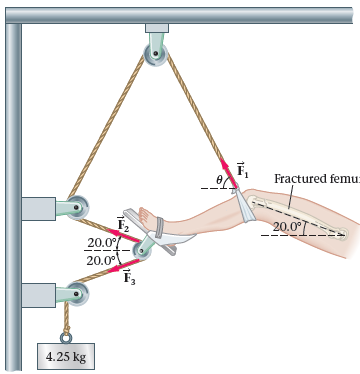To immobilize a fractured femur (the thigh bone), doctors often utilize the Russell traction system illustrated in
Question:
(a) The angle u required to produce this alignment of F(vector) total
(b) The magnitude of the force, F(vector) total, that is applied to the femur in this case. (Assume the pulleys are ideal.)

Fantastic news! We've Found the answer you've been seeking!
Step by Step Answer:
Related Book For 

Question Posted:





